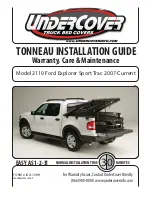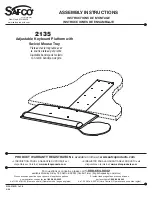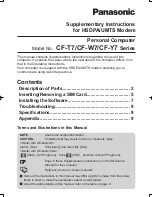
12
OPERATION
IMPORTANT:
Do not hitch Rear Blade to a tractor
rated outside the recommended horsepower range.
Doing so can bend and/or break the blade.
IMPORTANT
: Be careful when working areas where
obstructions can be hidden. Always check the area
before working it and mark any potential hazards with
a visible flag. Travel slowly through high risk areas
and always be prepared to stop immediately should
the blade make contact with a solid object.
Basic Operating Instructions
Thoroughly inspect the work area for buried utility
cables,
pipelines, sprinkler
heads,
and
any
unforeseen objects. Mark any potential hazards.
Place grade stakes if you intend to develop a specific
grade or soil level.
Adjust blade to the desired angle, tilt, and offset
position before lowering blade to the ground.
Lower blade to the ground and proceed forward at a
speed of no more than 2 to 4 mph. The blade should
immediately begin shaving the soil surface.
Set tractor’s draft
-
link height control lever to the
desired grade position. If blade is set at a 90 degree
angle to the direction of travel, it may be necessary to
raise the blade slightly so that dirt and gravel can flow
out evenly under the blade as it shaves off high spots
and fills in potholes or depressions.
Inspection After Hook
-
Up
Make the following inspections after attaching the
Rear Blade to the tractor:
Inspect tractor safety equipment to make sure it is in
good working condition.
Make sure all blade components are properly
lubricated. See “Lubrication Points”.
Check clearances between blade and tractor
throughout the range of all blade motions. See
“Check Interferences” for detailed instructions.
Unhooking the Rear Blade
Un
-
hook Rear Blade from the tractor as follows:
Park on a level solid hard surface. Place tractor gear
selector in park and set park brake.
Lower parking jack and secure with hitch pin.
Lower blade and parking stand onto level ground or
onto blocks supporting the unit just above ground.
Shut tractor engine off and remove key.
If needed, adjust length of upper center 3
-
point link
until hitch pin can be removed from hitch frame.
Remove linchpins from lower hitch pins and pull hitch
pins out.
Move lower 3
-
point arms out of the way and reinstall
hitch pins, linchpins, and hairpin cotters in the Rear
Blade hitch frame for storage.
Refer to “Long Term Storage” when storing the Rear
Blade for a long time.
Rear Blade Functions
IMPORTANT
: The warranty shall not apply to
damage caused by misuse, abuse, or contact with
obstructions.
NOTE
: Place grade stakes if you intend to develop a
specific grade or soil level.
Grading
Pivot moldboard to the desired angle, lower blade to
the ground, and set the tractor’s draft
-
link height
control to the desired position. Proceed forward at a
speed of no more than 2 to 4 mph. The blade should
immediately begin shaving the surface.
A blade full of material can be raised slightly so that
the material can flow out evenly under the blade to
effectively shave off high spots and fill in potholes or
depressions.
Loose soil can be smoothed out by pushing the soil
with the back of the moldboard while backing
-
up.
Make sure Rear Blade does not block tractor’s Slow
Moving Vehicle (SMV) sign while transporting on a
road. Install a SMV sign on the Rear Blade if tractor’s
SMV sign is blocked.
Traffic not alerted to a slow moving tractor might hit
the tractor causing serious injury or death.
Summary of Contents for BBLST5
Page 2: ...2...
Page 5: ...2 SAFETY PRECAUTIONS...
Page 6: ...3 SAFETY PRECAUTIONS...
Page 7: ...4 SAFETY LABELS REPLACE IF DECALS ARE DAMAGED FOR DECAL LOCATION SEE PART LIST DECAL 107650...
Page 19: ...16 PARTS BREAKDOWN PARTS LIST BBLST5 BBLST5 BBLST5 BBLST5...
Page 20: ...17...
Page 21: ...18...
Page 22: ...19 BBLST6 BBLST6 BBLST6 BBLST6...
Page 23: ...20...
Page 24: ...21 BBLST7 BBLST7 BBLST7 BBLST7...
Page 25: ...22...
Page 28: ...25...














































